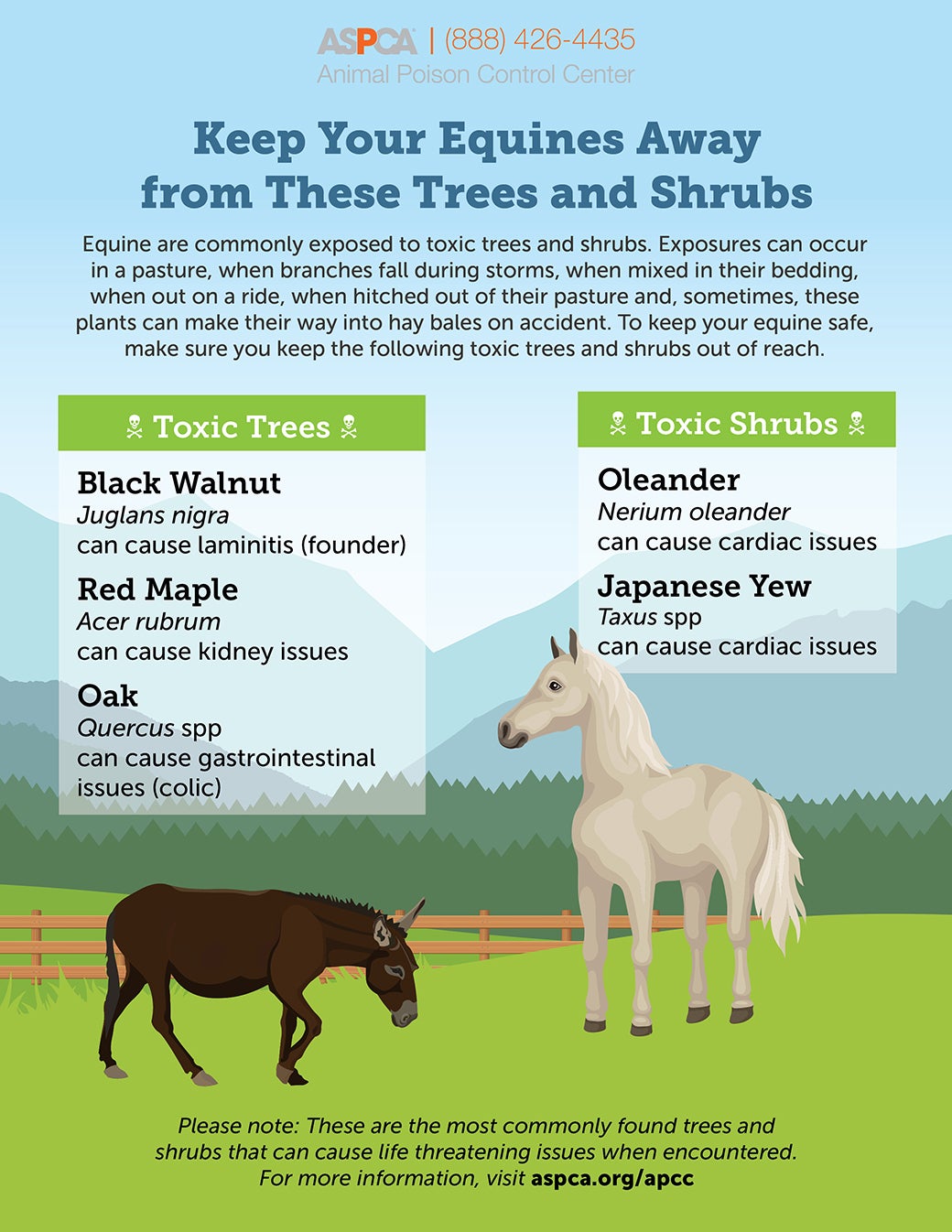


For those equine parents out there, the ASPCA Animal Poison Control Center wants you to be aware of trees and shrubs your horses and donkeys should avoid.
While horses and donkeys are herbivores and plants make up their entire diet, there are some plants that can cause them to become very sick or even die if they are eaten.


Horses and donkeys can be exposed to toxic trees and shrubs in a number of different ways:
- The trees are growing inside their pasture, and they decide to sample them.
- Trees are outside of the pasture, but a storm blows branches inside of the pasture or they can reach through the fence.
- Horses are fed leaves or branches from the toxic trees or shrubs as a treat by well-intentioned people (often visitors, guests or neighbors) who don’t know that they are toxic.
- Horses are bedded on shavings from a toxic tree (especially black walnut).
- Horses have the plant material baled into their hay, and they eat it that way.
- Horses are tied up outside of their normal pasture (such as wash racks, trailers or hitching posts), and they can reach these toxic trees and shrubs.
- Horses grab a bite when out trail riding.
In any circumstance, you will want to make sure that these trees and shrubs are not eaten by your equine friend:
Toxic Trees
Black Walnut trees (Juglans nigra) can cause laminitis (founder) when horses are bedded on shavings or when they eat the plant material. As little as 20% of black walnut in the shavings can cause toxicity in horses or donkey.
Red Maple (Acer rubrum) ingestion can cause destruction of the red blood cells when ingested by horses or donkeys. This can cause secondary kidney damage as well. Red or dark colored urine is typically the first sign seen. Limbs that are wilting or are partially dried are more likely to cause an issue.
Oak trees (Quercus sp.) and acorns contain tannins which can cause significant stomach upset and potentially colic. Horses and donkeys are less likely to show damage to the kidneys than cattle are. Oak trees are generally only an issue either in the spring when buds and small leaves are being ingested or later in the year when there is limited forage, especially in years with drought.
Toxic Shrubs
Oleander (Nerium oleander) is found in warm climates in the western and southern United States. Oleander contains a cardiac glycoside that affects the heart and can cause irregular heart rates and rhythm, changes in electrolytes and possibly death.
Japanese Yew (Taxus sp.) is a very common landscaping plant throughout the United States. Like oleander, it also affects the heart. Even small ingestions can cause changes in the heart rate and rhythm, low blood pressure, collapse and even sudden death.
These are all very common landscaping trees and shrubs and should not be in your pasture or fed to your horse. This is not an all-inclusive list of toxic plants for equines. To check on the toxicity of other trees, shrubs and plants, visit our poisonous plants page.
If you believe that your animal is ill or may have ingested a toxic substance, contact your local veterinarian immediately or the APCC 24-hour emergency poison hotline at (888) 426-4435.
Source: Read Full Article